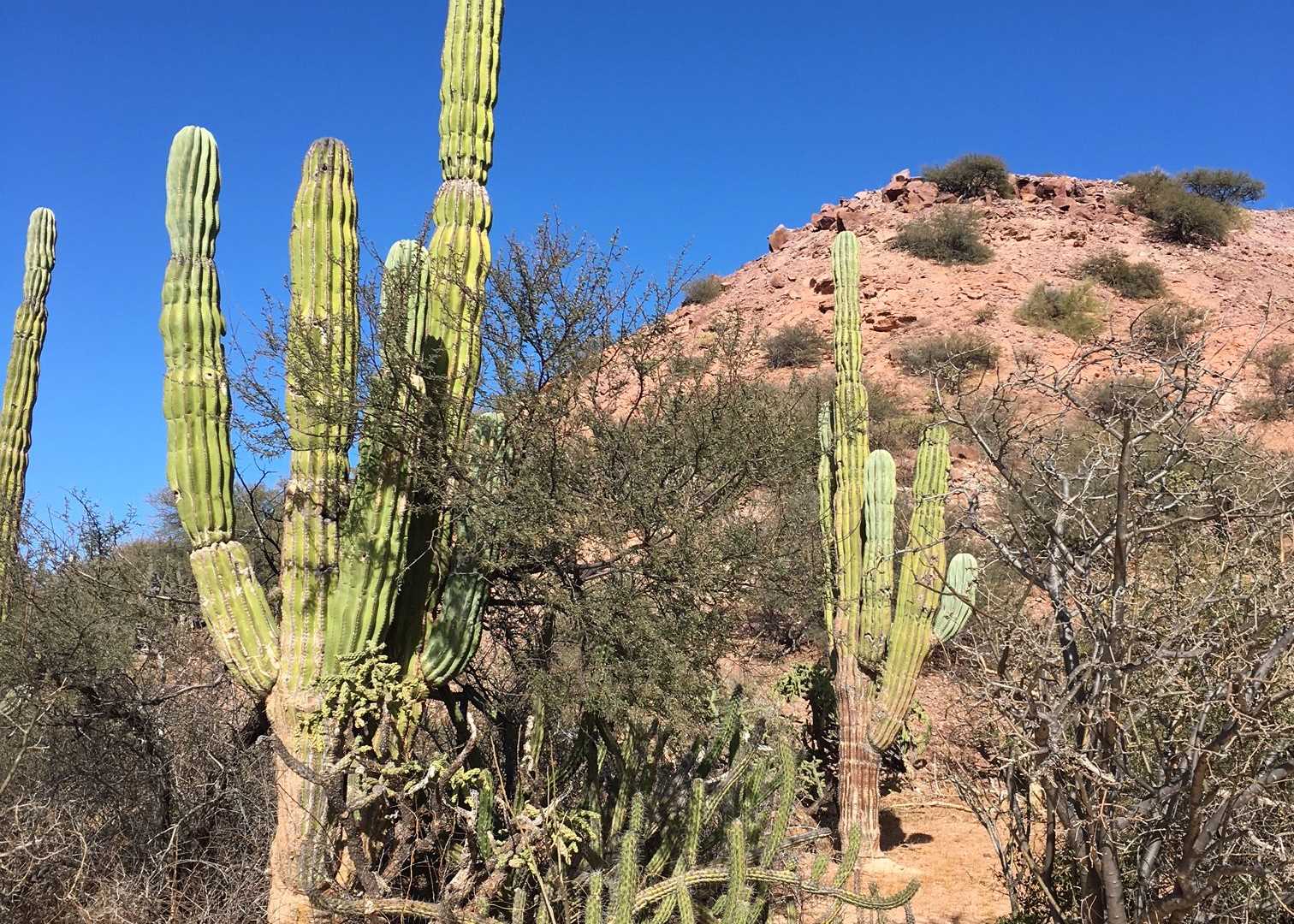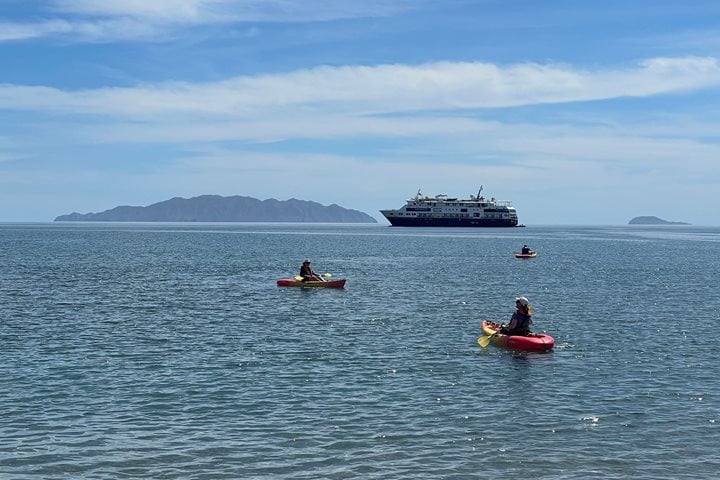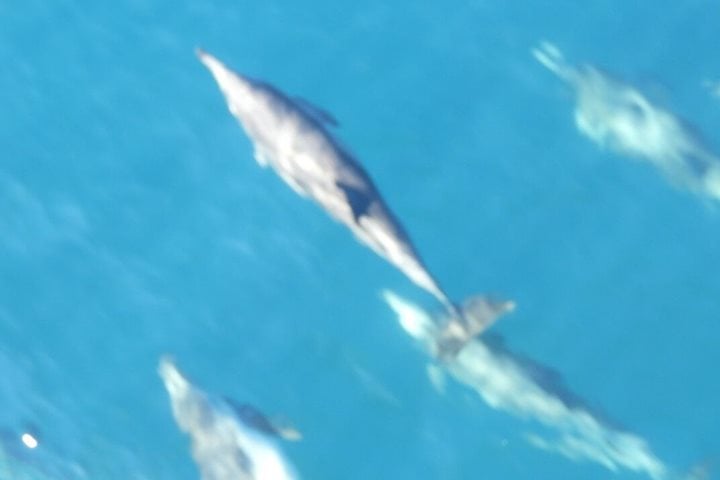We started our journey with a spectacular morning, a golden sunrise giving the volcanic soils and sandstones of Isla del Carmen a pinkish sheen, and flat calm serene waters. The Sierra de la Giganta range was in the background, marking the biggest mountain chain in Southern Baja. As we sipped our coffees on the bow, still slowly waking up to the scene, we watched brown pelicans, black-vented shearwaters, and Craveri’s murrelets fly low, just inches above the water surface. And above, magnificent frigatebirds and Heeriman’s gulls soared.
We spent much of the morning watching for marine mammals, and we were not disappointed. Large numbers of bottlenose dolphins joined us on all sides of the ship, and the faster we travelled, the more they enjoyed bow-riding, in other words, surfing on the pressure wave the ship created. Some of the dolphins even breached, fully jumping out of the water, as they played in the ship’s wake. How fun! Science tells us there is no survival reason for the dolphins to do this. They are just having fun! We had a brief glance at a Bryde’s Whale as well, one of the most elusive of whales. Our naturalist, Baret Solstad informed us about the many whales we could see in the area, and some of the threats to whale and dolphin populations, particularly the vaquita, the smallest marine mammal, endemic to the northern end of the Gulf of California. Tomorrow and the next day, we hope for blue whales, fin whales, and humpback whales!
The afternoon was a blissful relaxing time exploring Puerto Gato. The bay greeted us with imposing and stunning red sandstones along the shore, a Cardon cactus desert in the back, and all of this towered by the 15-million-year-old volcanic range, the Sierra de la Giganta! Some of us snorkeled in the bay, enjoy the sights of sergeant majors, parrotfish, pencilfish, pufferfish, etc. in the exceedingly clear turquoise waters. Some of us had a serene kayak or paddle-board session, just taking in the beauty of the landscape, all the sights and sounds.
Yet, others explored the desert and learned about all kinds of interesting desert plant adaptations. All the plants have devised ways to cope with the arid climate: some drop their leaves when there is no rain, some get rid of leaves all together and just have pleated structures and spines (all cacti!), and some develop thick leaves that are good at storing lots of water (succulents!).
This evening, we enjoyed a lovely sunset in this remote part of Baja while listening to the American Football Super Bowl final on the radio! Tomorrow, off to Los Islotes to snorkel with the sea lions!!







